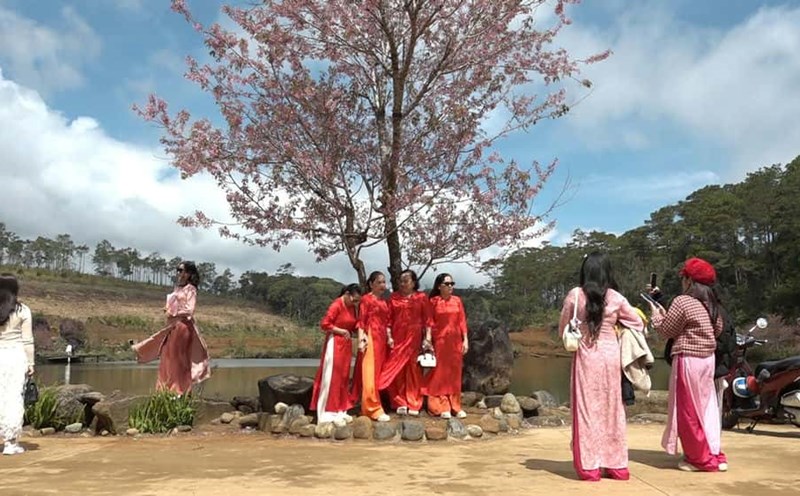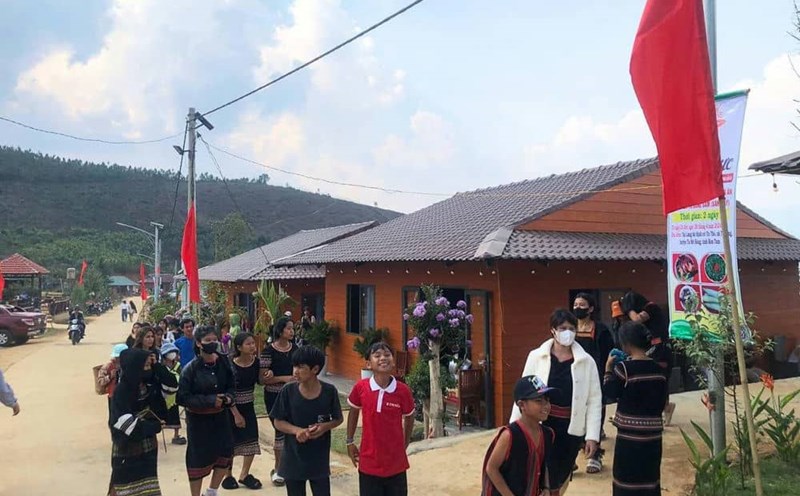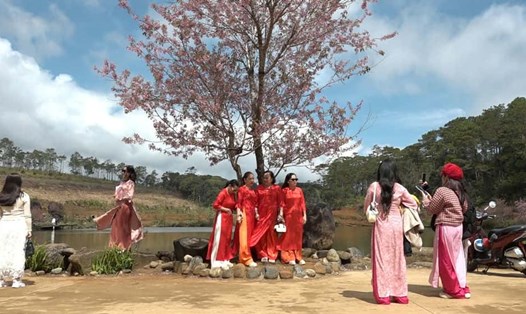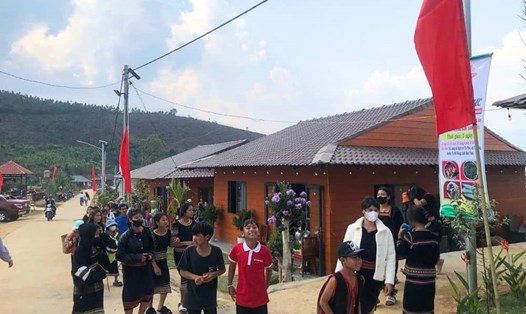On February 13, the People's Committee of Kon Plong district, Kon Tum province, said that the locality is continuing to expand the area of cold-climate vegetable and fruit cultivation and apply high technology in agriculture to increase product value.
Currently, Kon Plong district has 266 hectares of high-tech agricultural production, with the participation of 21 enterprises, 1 cooperative, 3 farms and 25 individual households.
Some typical models that attract tourists to visit and experience include: The organic cold-climate vegetable and fruit production model at Thanh Nien Mang Den Cooperative and the VietGAP cold-climate vegetable and fruit production model at Viet Khang Nong Company Limited.
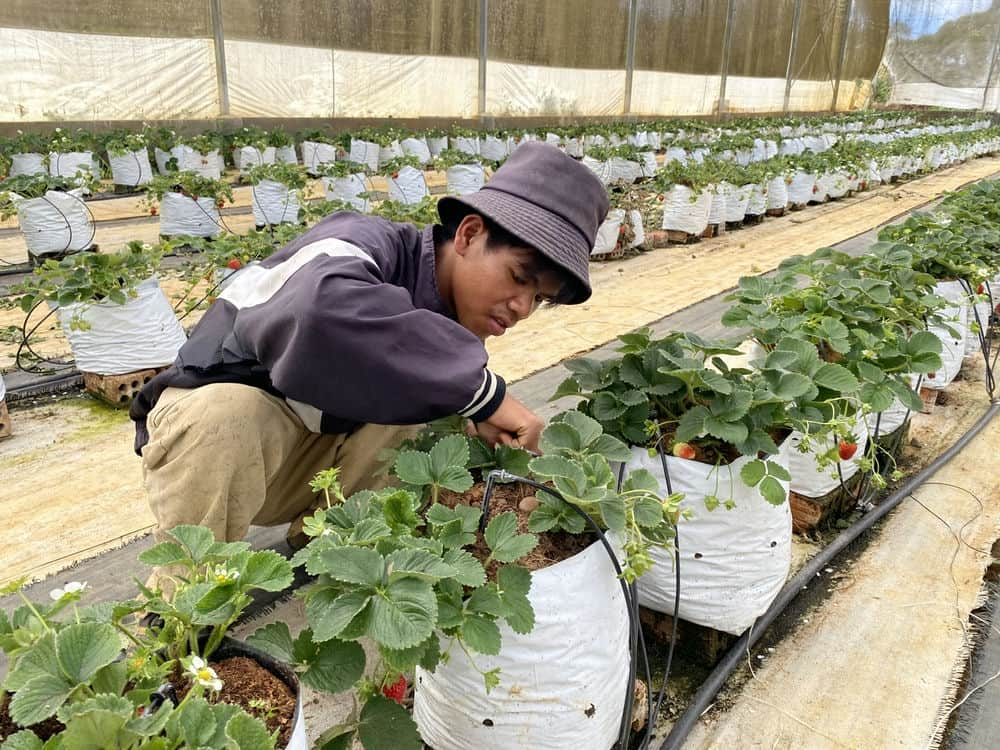
Typical agricultural models in Kon Plong include: growing cherry tomatoes in greenhouses by Mang Den Green Agriculture Joint Stock Company, growing high-quality ST25 rice by the District Agricultural Service Center, growing ginseng by Mekong Medicinal Materials Joint Stock Company...
Kon Plong District People's Committee assessed that local agriculture is gradually innovating production methods, contributing to overcoming fragmentation, small-scale production, low productivity and efficiency.
Enterprises and people increasingly pay attention to applying scientific and technological advances in production. Some products have formed a chain from production to consumption, increasing value and economic efficiency.
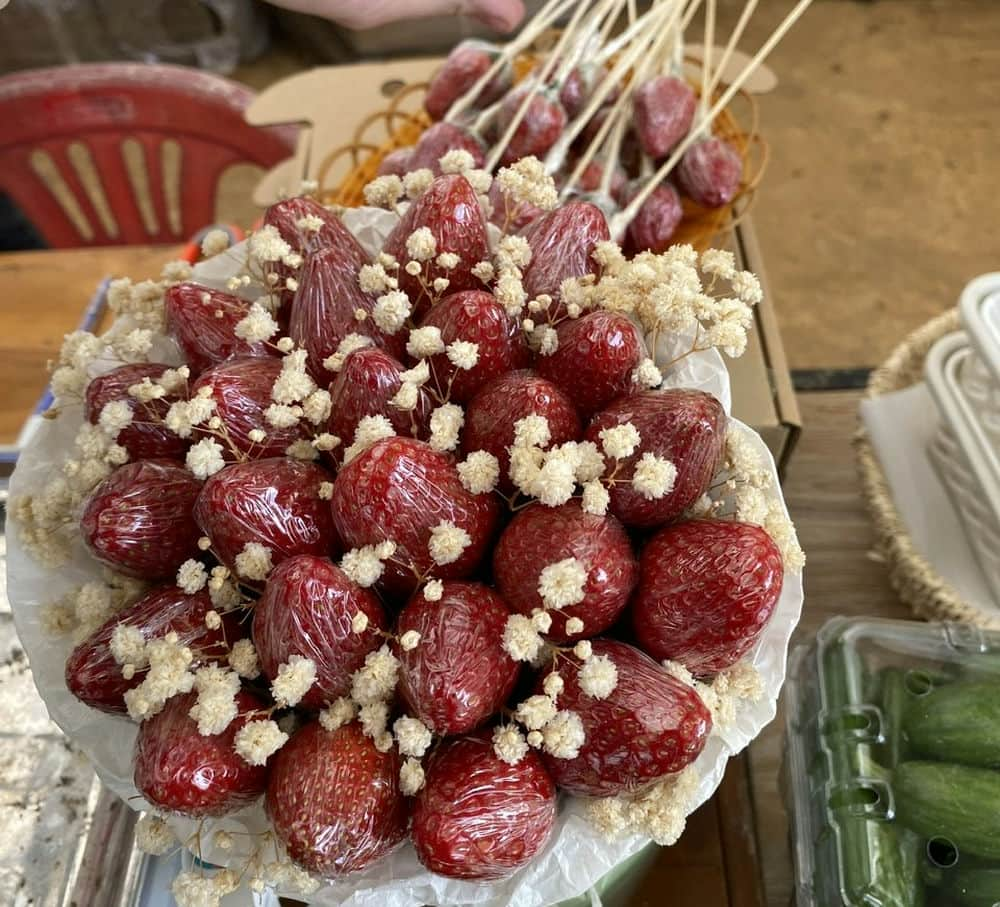
Kon Plong District People's Committee aims to increase the annual crop area to 7,722 hectares. Of which, there are 500 hectares of cold-climate vegetables, flowers, tubers, and fruits.
The medicinal plant growing area reaches 1,255 hectares, including 1,000 hectares of ginseng. Cold-climate coffee trees have expanded to 1,605 hectares, aiming for 2,000 hectares by 2030. In addition, the district has developed 500 hectares of tea and 4,000 hectares of forestry trees.
The district also aims to plant 1 million cherry blossom trees by the end of 2025 and cover the National Highway 24 from Mang Den town to Hieu commune with pine trees. This is one of the efforts to build Mang Den town into a cherry blossom town.
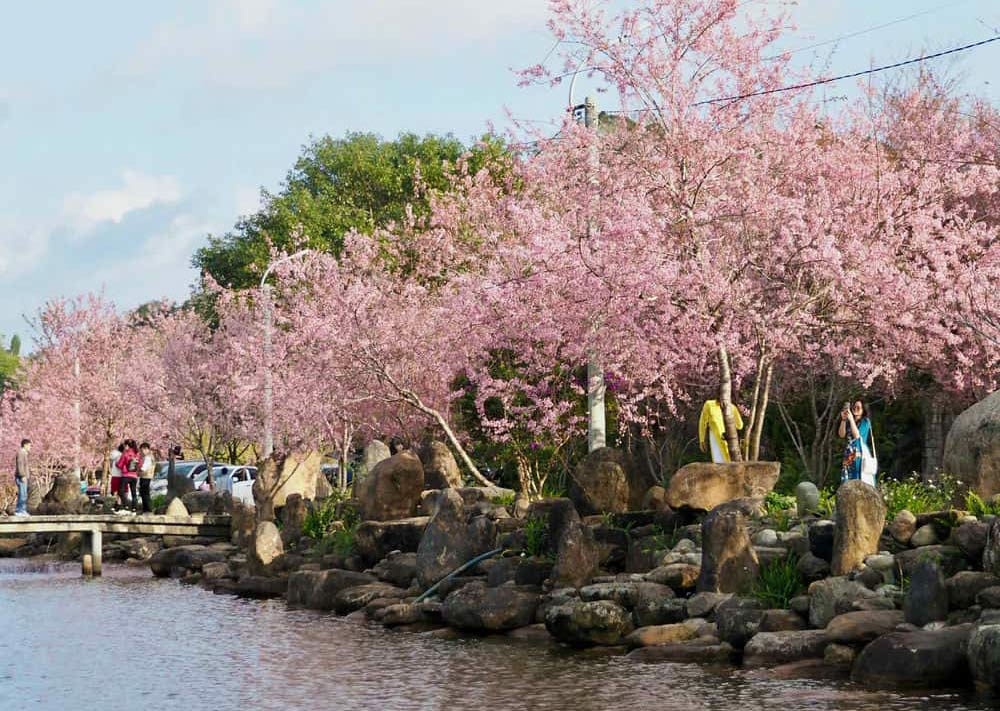
High-tech agricultural areas, cold-climate medicinal herbs and cherry blossom forests create the characteristic landscape of Mang Den in a cool climate.
Thanks to that, Kon Tum attracts a large number of tourists, aiming to welcome 2.5 million visitors by 2025, with Mang Den as the key destination.



